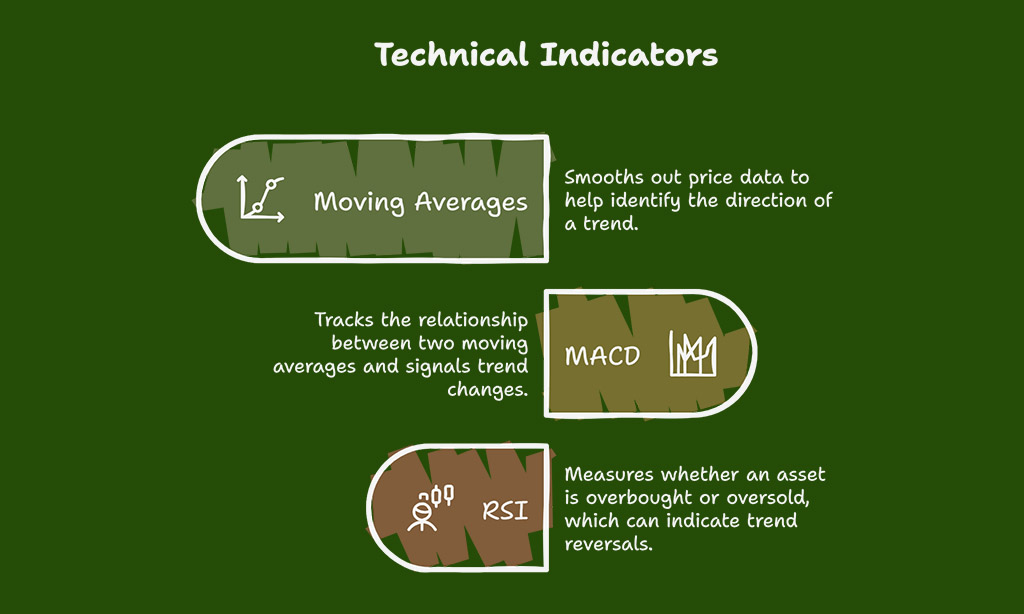The world of cryptocurrency trading is exciting and ever-evolving. Whether you’re a seasoned investor or just starting, having a clear understanding of trading strategies is essential to navigating the volatile crypto market.
In this comprehensive guide, we’ll walk through the 10 Most Common Crypto Trading Strategies, providing insights into each, along with practical tips, tools, and real-world examples to help you master the art of crypto trading.
Introduction to Crypto Trading Strategies
What is Crypto Trading?
Crypto trading refers to the buying, selling, and exchanging of digital assets like Bitcoin, Ethereum, and other cryptocurrencies. Traders aim to profit from fluctuations in the price of cryptocurrencies, taking advantage of their volatility. Unlike traditional trading markets, the crypto market operates 24/7, offering ample opportunities but also requiring constant attention and adaptability.
Why Understanding Trading Strategies is Crucial
A trading strategy is essential for success in the crypto market. Without a clear strategy, traders may fall victim to emotional decision-making, which can lead to substantial losses. A well-defined strategy helps you stay focused, manage risk, and optimize returns. Whether you’re looking for quick profits or long-term growth, a solid strategy is the foundation of success.
How Crypto Trading Differs from Traditional Trading
There are key differences between crypto and traditional stock trading:
- Market Hours: Crypto markets never close, unlike traditional stock exchanges that operate on fixed hours.
- Volatility: Cryptocurrencies tend to be more volatile than traditional assets like stocks, providing both higher risk and higher potential rewards.
- Liquidity: Crypto markets can experience liquidity problems depending on the exchange, making it harder to execute large orders at desired prices.
Understanding these distinctions is vital when developing your trading strategy.
The Basics of Crypto Trading Strategies
Before diving into individual strategies, it’s important to grasp some foundational principles that apply to all of them.
Overview of Common Crypto Trading Strategies
The most common crypto trading strategies include day trading, swing trading, scalping, and HODLing. These strategies differ primarily in terms of the time frame, risk, and level of engagement required. The strategy you choose will depend on your risk tolerance, experience, and personal trading goals.
Factors Influencing Crypto Trading Decisions
Several factors play into successful crypto trading decisions:
- Market Sentiment: How traders feel about the market can drive prices up or down. Sentiment analysis tools can help gauge the mood of the market.
- Technical Indicators: Tools like moving averages, RSI, and MACD help identify market trends, predict price movements, and fine-tune entry and exit points.
- Fundamental Analysis: The value of a cryptocurrency is not only determined by its price but also its underlying technology, team, and real-world application.
Risk Management in Crypto Trading
In crypto trading, risk management is crucial. Here are some key tips to help manage risk:
- Use Stop-Loss Orders: Set a price at which you want to automatically sell a coin if its price falls, protecting you from large losses.
- Diversification: Spread your investments across multiple cryptocurrencies to reduce exposure to any single asset.
- Position Sizing: Only risk a small portion of your capital on each trade, so you can absorb losses without depleting your funds.
Top 10 Most Common Crypto Trading Strategies Explained
Let’s take a look.
1. Day Trading
Day trading involves buying and selling crypto assets within the same day. The goal is to capitalize on small price movements by executing multiple trades throughout the day.
Pros and Cons
| Pros | Cons |
| Quick profits from short-term price fluctuations | Requires constant monitoring and quick decision-making |
| No overnight risks | Can be stressful and time-consuming |
| High liquidity for rapid trade execution | Transaction fees can add up |
Best Practices for Successful Day Trading
- Technical Analysis: Use charting tools and indicators like moving averages and Bollinger Bands to spot entry and exit points.
- Create a Trading Plan: Set clear entry and exit strategies, and stick to them. Don’t let emotions dictate your trades.
- Manage Your Risk: Use stop-loss orders and only risk a small portion of your capital on each trade.
Example: A trader may spot an uptrend in the price of Bitcoin in the morning and buy in. By the afternoon, as the price rises by 3%, they sell, securing a profit before the market closes for the day.
2. Swing Trading
Swing trading aims to capitalize on price “swings” over several days or weeks. Traders identify trends and hold positions for a longer time than day traders, looking to profit from medium-term market movements.
Swing Trading vs. Day Trading
| Day Trading | Swing Trading |
| Multiple trades per day | Fewer trades, held for days or weeks |
| Fast-paced, short-term | Slower-paced, medium-term focus |
| Requires constant monitoring | Less time-intensive, more flexibility |
Risk Considerations
Swing trading involves holding positions overnight or for several days, which means the trader is exposed to overnight risk. However, if managed correctly, this strategy can provide larger profits than day trading.
Best Practices for Swing Trading
- Identify Trends Early: Use trend-following indicators like the Moving Average Convergence Divergence [MACD] to enter trades when the market starts moving in a direction.
- Watch for Key Resistance and Support Levels: These levels will give you an idea of when the price might reverse, allowing you to exit a position at the right time.
Example: A trader buys Ethereum during a short-term pullback in a clear uptrend, holding the position for a week as the price moves higher.
3. Scalping
Scalping is an aggressive strategy where traders aim to make small profits from price movements over a very short time frame. Typically, scalpers execute dozens or even hundreds of trades in a single day.
Benefits and Challenges
| Benefits | Challenges |
| Quick profits from small price changes | Requires constant attention to the market |
| High frequency of trades increases opportunities | High fees can diminish profits |
| No overnight risk | Scalpers may face slippage and liquidity issues |
Key Tools and Techniques for Scalping
- Liquidity: Trade on exchanges with high liquidity to ensure quick entry and exit.
- Technical Indicators: Use fast indicators like RSI or Stochastic Oscillators to spot short-term overbought or oversold conditions.
- Leverage: Some scalpers use leverage to amplify small profits, but this increases risk.
Example: A trader spots a 0.5% price movement in Bitcoin in a matter of minutes. They execute multiple buy/sell orders, accumulating small profits with each trade.
4. HODLing [Buy and Hold Strategy]
HODLing is a long-term investment strategy where traders buy cryptocurrencies and hold them for years, often regardless of market conditions. The strategy is based on the belief that the cryptocurrency will appreciate significantly over time.
When to Consider HODLing
- If you believe in the long-term fundamentals of a cryptocurrency like Bitcoin or Ethereum.
- When markets experience major downturns, but you believe the asset will recover.
Risks and Rewards of Long-Term Holding
| Rewards | Risks |
| Potential for large long-term gains | Market volatility can lead to significant short-term losses |
| Less time-consuming than active trading | Opportunity cost of not investing in other assets |
Example: An investor purchases Bitcoin in 2017 at $10,000 and holds it until 2021, when the price rises to $60,000. Despite market fluctuations, their long-term investment pays off.
5. Trend Following
Trend following involves analyzing market conditions to identify whether the price is trending upwards [bullish] or downwards [bearish]. Traders use various tools and indicators to determine trends.
Using Indicators to Spot Trends
| Indicator | Function |
| Moving Averages | Smooths out price data to help identify the direction of a trend |
| MACD | Tracks the relationship between two moving averages and signals trend changes |
| RSI | Measures whether an asset is overbought or oversold, which can indicate trend reversals |
How Trend Following Affects Trading Decisions
Trend followers will generally stay in a position as long as the trend persists. They enter long positions in bullish trends and short positions in bearish trends, exiting when the trend shows signs of reversal.
Example: A trader identifies a strong uptrend in Bitcoin and buys in early, holding the position until indicators suggest the trend is reversing.
6. Arbitrage Trading
Arbitrage trading capitalizes on price discrepancies between different exchanges. A trader can buy a cryptocurrency at a lower price on one exchange and sell it for a higher price on another, making a profit from the difference.
Types of Arbitrage Opportunities
| Type of Arbitrage | Description |
| Spatial Arbitrage | Exploiting price differences between different exchanges |
| Triangular Arbitrage | Taking advantage of currency conversion discrepancies within an exchange |
Limitations and Risks of Arbitrage Trading
| Limitation | Risk |
| Transaction Fees | High fees can diminish profits from arbitrage opportunities |
| Execution Speed | Price discrepancies close quickly, requiring fast execution |
Example: A trader notices Bitcoin is priced at $30,100 on Exchange A and $30,200 on Exchange B. They buy on Exchange A and sell on Exchange B, making a $100 profit per Bitcoin.
7. Position Trading
Position trading is a long-term strategy where traders hold their assets for weeks, months, or even years. Unlike day or swing traders, position traders focus on the long-term potential of the cryptocurrency, ignoring short-term price movements.
Differences Between Position and Swing Trading
| Position Trading | Swing Trading |
| Long-term focus | Medium-term focus |
| Fewer trades, more passive | More active, entering and exiting within days or weeks |
| Lower frequency of decisions | Higher frequency of decisions |
How Long-Term Traders Manage Risk
Long-term traders use stop-loss orders, portfolio diversification, and a deep understanding of the cryptocurrency’s fundamentals to manage risk.
Example: A trader buys Bitcoin for $10,000 in 2018 and holds it through market fluctuations, eventually selling it in 2021 for $60,000.
8. News-Based Trading
Cryptocurrency markets are sensitive to news. Regulatory changes, technological advancements, or even social media comments can trigger significant price movements.
Strategies for Trading Based on News Events
- Real-Time Monitoring: Follow crypto news outlets, social media platforms, and industry forums for breaking news.
- Sentiment Analysis: Tools like sentiment analysis can help gauge market reactions to news and provide insights into future price movements.
Risk of Following News Trends in Crypto Markets
News-based trading can be volatile, as reactions to news are often exaggerated. The market may overreact to positive or negative news, leading to sudden price swings.
Example: After a major exchange announces a partnership with a large financial institution, Bitcoin’s price jumps by 5% within hours.
9. Copy Trading
Copy trading, also known as social trading or mirror trading, is a strategy that allows traders to automatically copy the trades of successful or professional traders. By using a copy trading platform, beginners or less-experienced traders can follow the actions of experts and replicate their trades in real-time.
Benefits and Drawbacks of Copy Trading
| Benefits | Drawbacks |
| Allows beginners to follow experienced traders | Relies on the expertise and consistency of others |
| Simplifies the trading process | Potential for losses if the copied trader makes poor decisions |
| Offers exposure to various strategies and markets | Trading fees may apply, reducing profits |
Best Platforms for Copy Trading
Some popular platforms for copy trading include:
- eToro: A widely used platform offering a wide range of crypto assets and social trading tools.
- Covesting: A platform that allows traders to follow and copy the strategies of top-performing crypto traders.
- Zignaly: A platform focused on cryptocurrency copy trading that integrates with Binance and other exchanges.
Practical Tips for Successful Copy Trading
- Do Your Research: Choose traders to copy based on their past performance, risk levels, and strategies.
- Diversify: Don’t rely on a single trader for all your investments. Diversify your portfolio by copying multiple traders.
- Start Small: Begin with smaller investments to minimize potential losses as you get familiar with the platform and traders you’re following.
Example: A beginner trader on eToro might follow a professional trader who specializes in Ethereum. As the pro buys and sells Ethereum, the beginner’s account automatically mirrors those trades, simplifying the trading process.
10. Automated Trading [Bot Trading]
Automated trading, also known as bot trading, involves using software to execute trades based on pre-set rules or algorithms. These bots analyze the market, make decisions, and place orders automatically, without the need for human intervention. Traders can use bots to automate repetitive tasks or implement complex trading strategies.
Benefits of Automated Trading
| Benefits | Drawbacks |
| Eliminates emotional decision-making | Bots can malfunction or perform poorly under unusual market conditions |
| 24/7 market coverage | Requires initial setup and ongoing monitoring |
| Can execute trades faster than humans | Not all bots are equally reliable or trustworthy |
Types of Crypto Trading Bots
- Arbitrage Bots: These bots monitor different exchanges for price discrepancies and execute arbitrage trades to take advantage of these gaps.
- Trend Following Bots: These bots automatically trade based on the recognition of market trends, buying when prices rise and selling when prices fall.
- Market-Making Bots: These bots provide liquidity by placing buy and sell orders at specific prices, profiting from the spread between the buy and sell price.
Popular Crypto Trading Bots
- 3Commas: A well-known crypto bot that supports a wide variety of strategies and integrates with most major exchanges.
- Cryptohopper: A highly customizable bot with various pre-built strategies for automated trading.
- Pionex: A platform that offers built-in crypto trading bots with zero setup required.
Key Considerations for Using Bots
- Strategy Testing: Always backtest a bot on historical data before live trading to ensure its effectiveness.
- Monitor Performance: While bots trade automatically, they still need oversight. Keep track of their performance and adjust settings if necessary.
Example: A trader uses a trend-following bot on Binance to automatically buy and sell Bitcoin as its price fluctuates, without manually monitoring the market.
Takeaways: Mastering Crypto Trading Strategies
Navigating the world of crypto trading requires a clear understanding of the various strategies available. The 10 Most Common Crypto Trading Strategies we’ve discussed—day trading, swing trading, scalping, HODLing, trend following, arbitrage, position trading, news-based trading, copy trading, and automated trading—each offer unique advantages and challenges.
Your choice of strategy will depend on several factors:
- Risk tolerance: Some strategies, like scalping, can involve high levels of risk and frequent trades, while others, like HODLing or position trading, require more patience and long-term focus.
- Time commitment: Active strategies like day trading and scalping require constant monitoring, whereas passive strategies like HODLing and copy trading demand less time and involvement.
- Experience level: Newer traders may benefit from strategies like copy trading or news-based trading, while experienced traders might thrive with day trading or swing trading.
Remember that no strategy is foolproof. The key to success in crypto trading lies in continually adapting to market changes, managing your risks, and refining your approach based on what works best for your individual goals.
As the crypto market evolves, staying informed about trends, understanding the latest tools, and continually learning about new strategies will help you thrive in this dynamic space. Whether you’re just beginning or looking to refine your approach, the Most Common Crypto Trading Strategies are your foundation to making informed, profitable trading decisions.





































